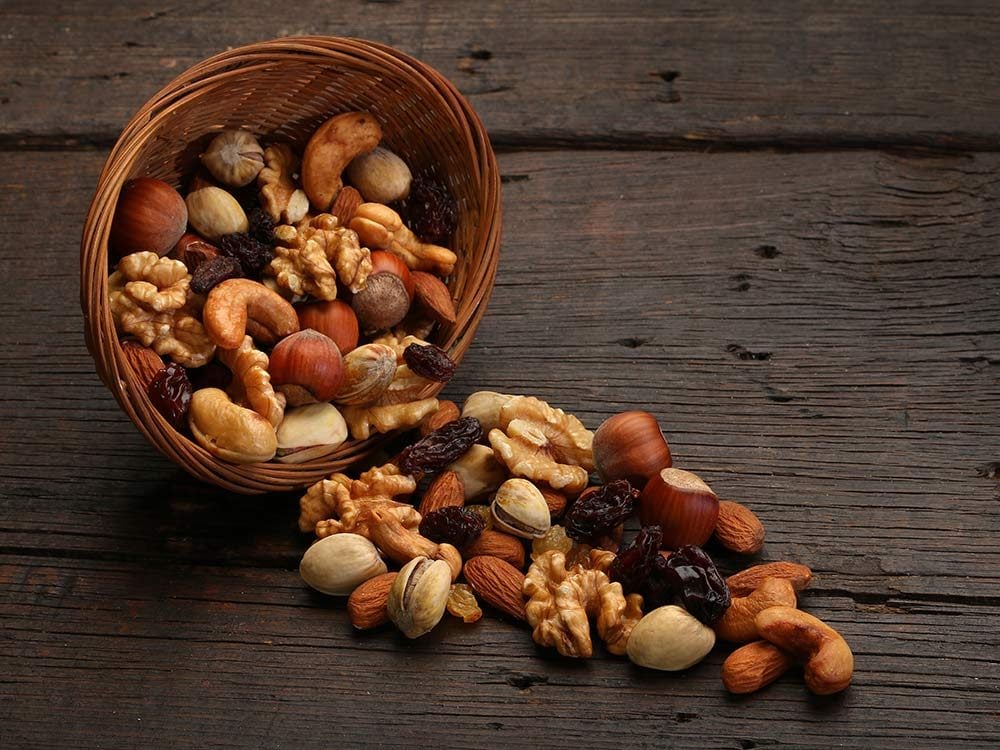
Go nuts
Nuts like peanuts, cashews and walnuts don’t just add a tasty crunch to your cereal—they’re also packed with protein. “It’s so easy to have a protein-less choice for breakfast, and around 10 you think, ‘That breakfast didn’t stick with me,’” says Libby Mills, MS, RDN, LDN, FAND, spokeswoman for the Academy of Nutrition and Dietetics. She recommends getting a minimum of seven grams of protein in the morning. One ounce of nuts has about five or six grams to start you off on the right foot. Pick a raw variety, which keeps the healthy oils intact.
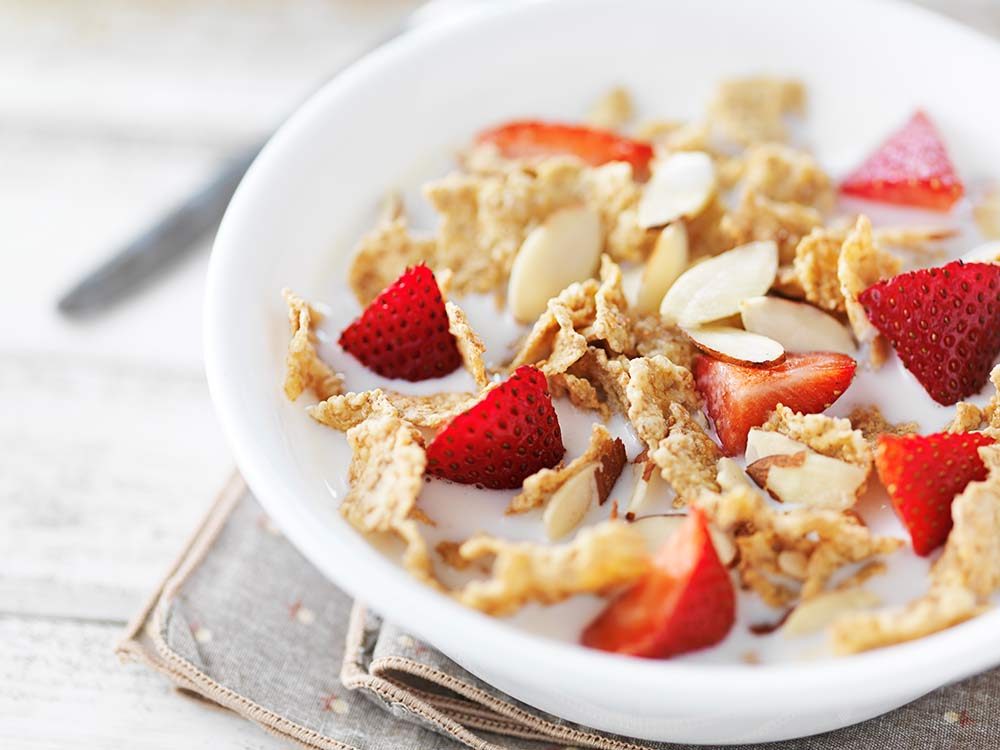
Mix things up
You know your go-to cereal is a sugar bomb, but that doesn’t mean you can’t enjoy it in moderation. Mix a sweet cereal with no-sugar-added variety to get the flavor without so many empty calories, suggests Alissa Rumsey, MS, RD, spokesperson for the Academy of Nutrition and Dietetics. “Start with half-cup of each and wean down to one-forth cup of sugary cereal, plus three-fourths cup no-sugar-added cereal,” she says.
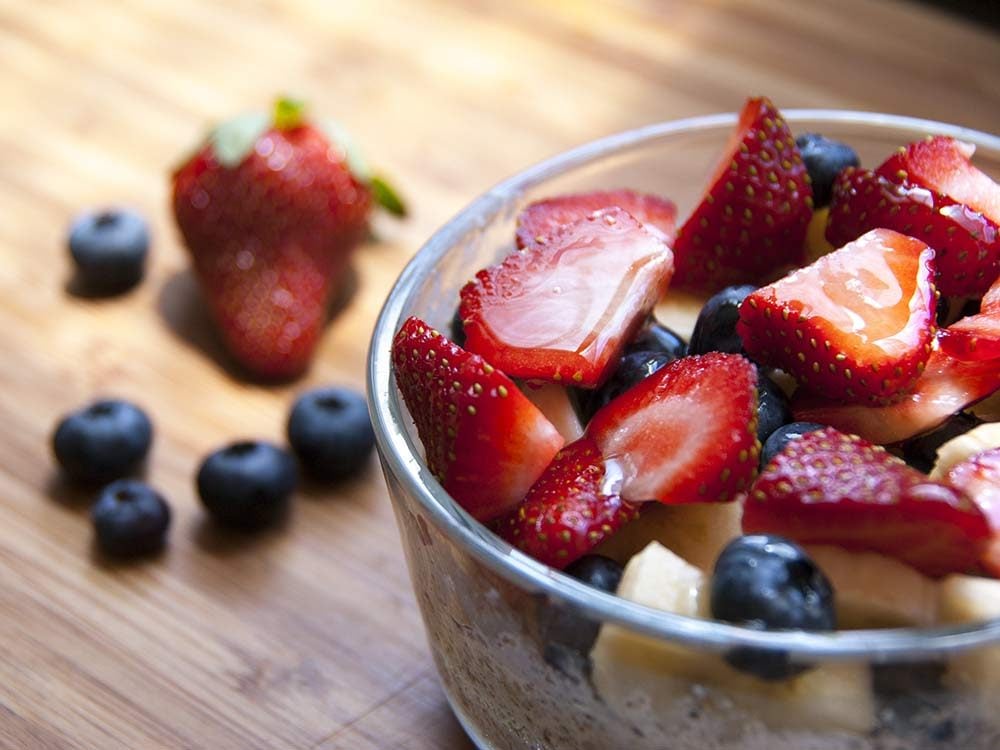
Top it off
Sugary cereal is delicious, but it doesn’t have to be the main event of your breakfast. Stir some into a bowl of plain oatmeal for a sugar-cookie flavour, or sprinkle cereal on top of Greek yogurt, says Mills. “You’re using your childhood favourite cereal for topping—just as crunch and delectable memories,” she says.
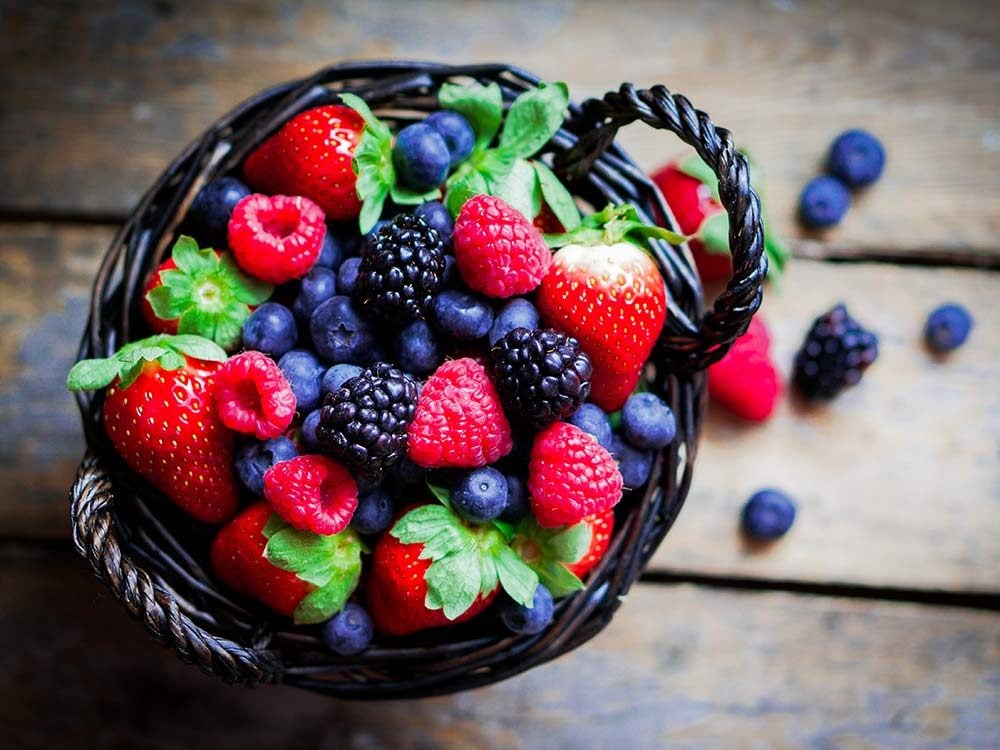
Sweeten the deal
Pour a cup of berries or cut fruit into your cereal to turn your bowl into a nutritional (not to mention delicious) powerhouse. “Fruit is a great addition to add some natural sweetness without added sugar,” says Rumsey. “Fruit adds fibre and additional vitamins and antioxidants.” Dried fruits are shrunken versions of their fresh counterparts, so sticking with fresh will give you bigger servings for fewer calories, says Mills.
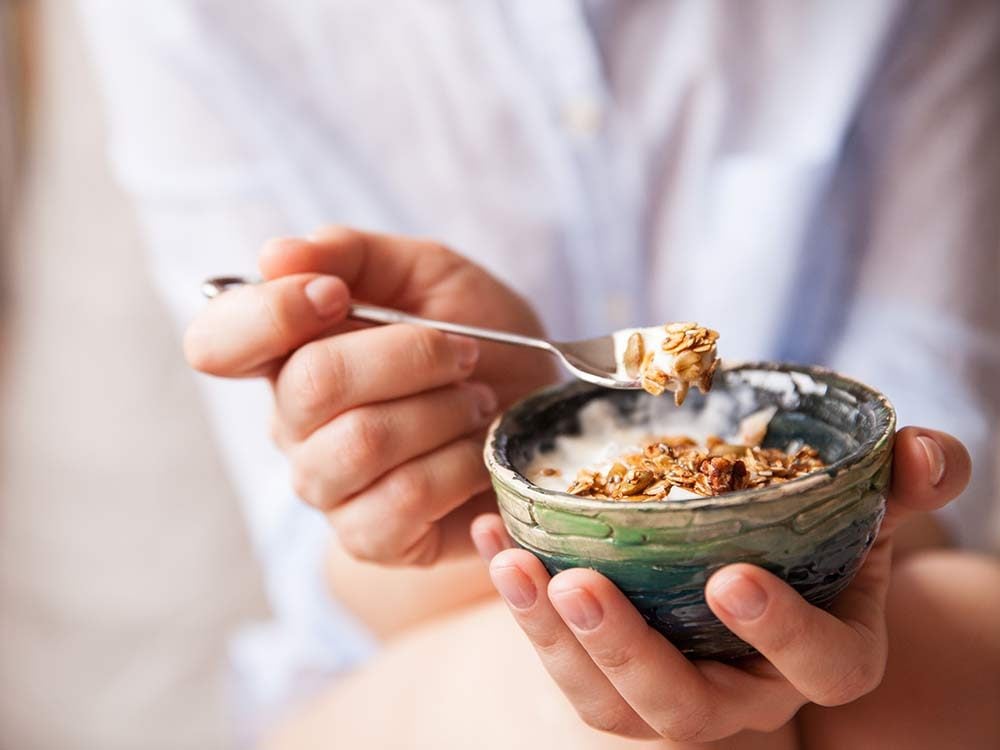
Heat things up
Your bland, cold bowl of no-sugar-added cereal doesn’t have to stay chilled. Heat up a bit less milk than you’d typically use to turn plain flakes into a warm treat. Spruce it up with nutritious banana, protein-packed nut butter, and antioxidant-rich cocoa powder, suggests Mills. “It’s something a little different to make it interesting,” she says.
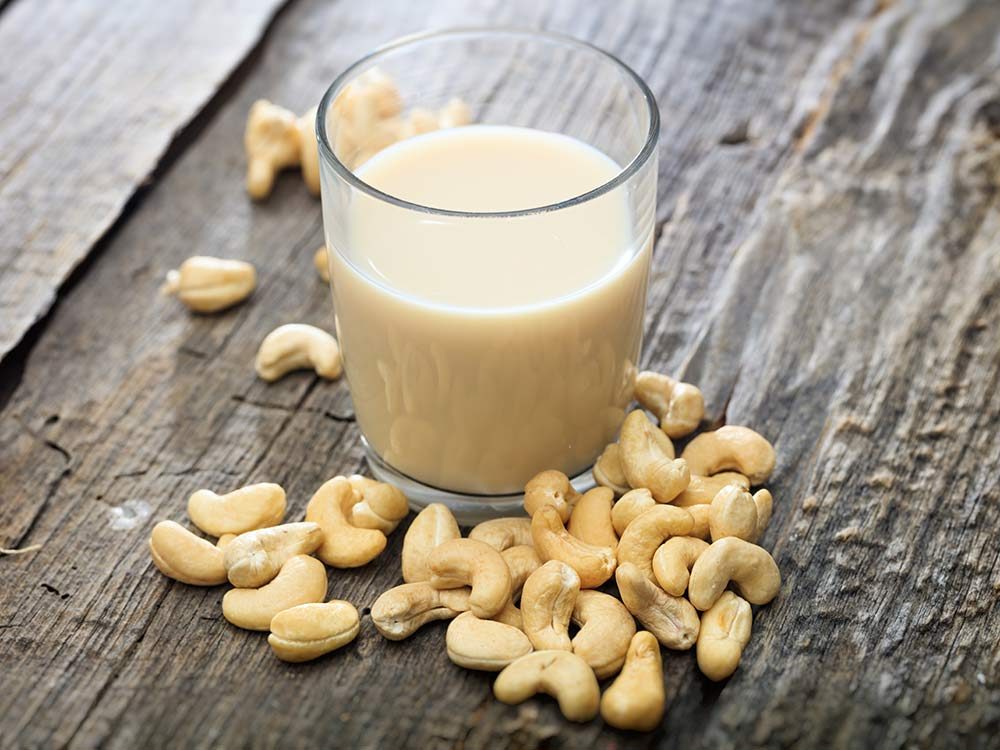
Steer clear of nut milk
“When people start to choose rice or almond milk, one of the things they miss out on is a solid serving of protein,” says Mills. Low-fat milk has about four grams of protein per half-cup, but almond and rice milk have less than one gram. Pick soy milk, which has about the same amount of protein as cow’s milk, if you need a dairy-free option. If you do go with nut or rice milk, add some whole nuts for an extra punch of protein.

Think outside the bowl
Cereals don’t have to be a sweet, carb-based breakfast. “Some cereals that have no sugar added can be transformed into savoury foods,” says Mills. Use a less-sweet cereal as a crunchy crust or topping for baked egg muffins, she suggests.
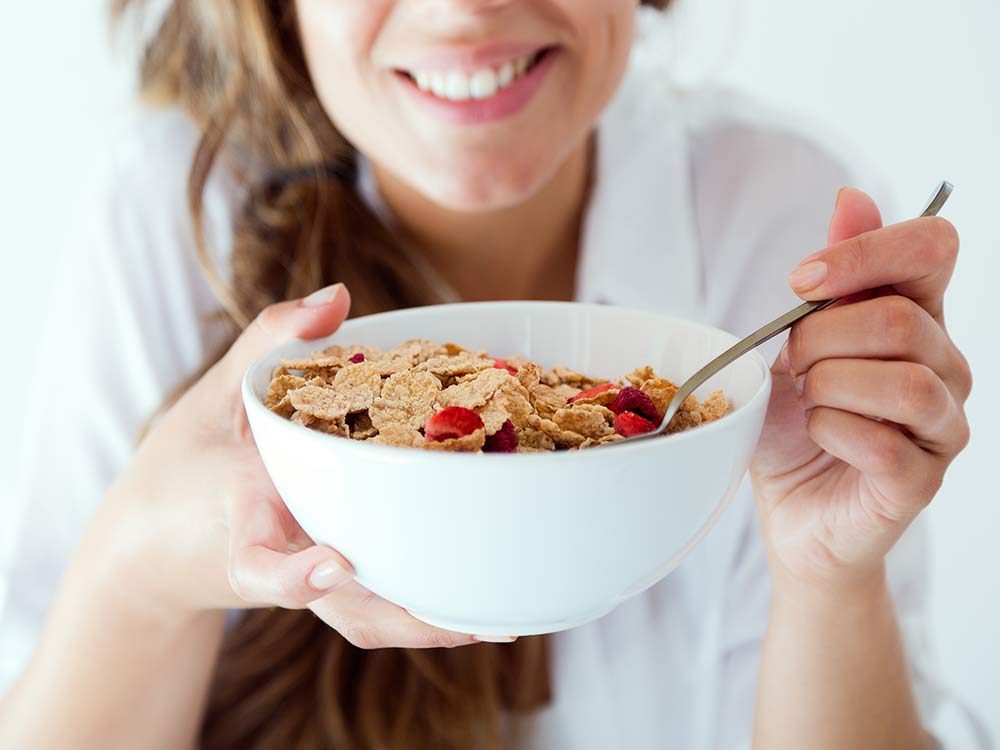
Check the nutrition label
Turn the cereal box around to look at the nutrition facts before you put it in your cart. A short ingredient list is typically better, and you should aim for a variety with less than ten grams of sugar and at least four grams of fibre, says Rumsey. One with about 200 calories will keep you satisfied without overdoing the calories, says Mills. “As you might add a few ingredients or douse it with low-fat milk, it gives you room to have those extras and still be within a reasonable calorie level for breakfast,” she says.
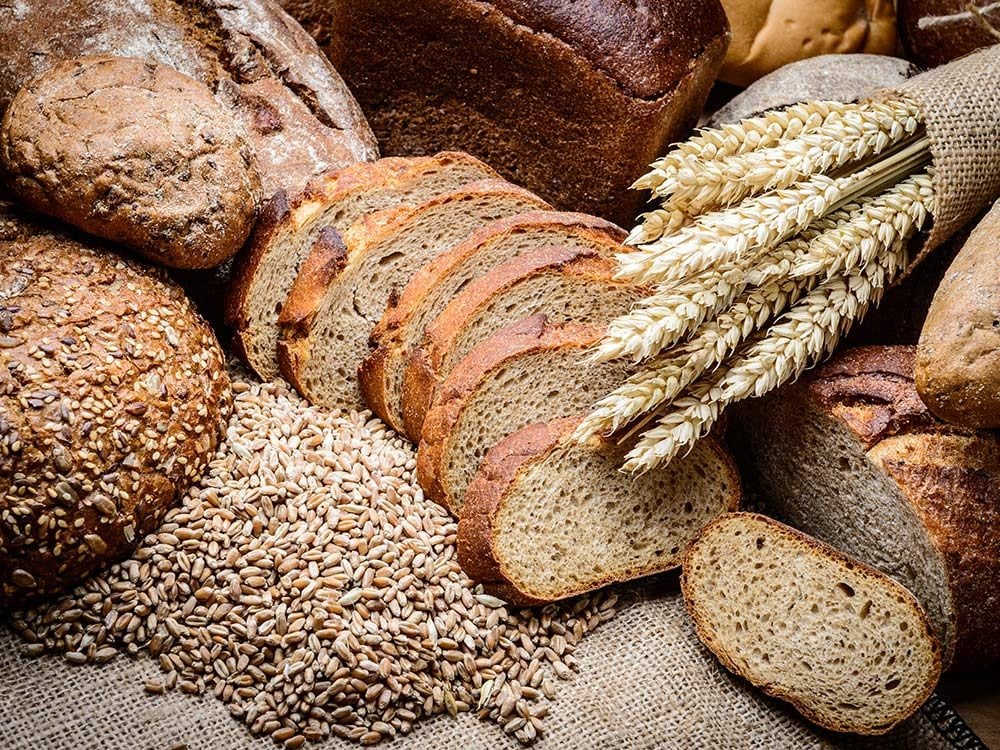
Go for whole grains
Whole grains don’t go through the processing that removes its healthy parts. “Whole grains are just that—the whole kernel of whatever it is,” says Mills. “It’s not just the carbohydrates, but the fibre and endosperm.” Fibre helps keep you full, while the germ contains healthy vitamins and minerals. Ideally, you should pick a cereal that’s 100 per cent whole grain. If you do go for one with a mix of whole and refined grains, make sure 100 per cent whole grain is the first listed in the ingredients, says Mills.